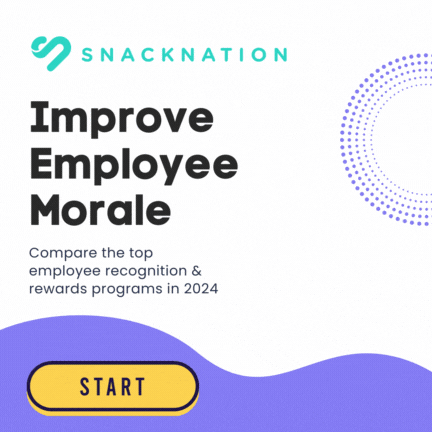If you have office procedures you need to document, then you could probably use an office procedures manual template. Templates make your life easier, giving you a solid starting point and helping ensure that you don’t leave out any crucial information.
Why would you need to document office procedures in the first place? In other words, why do you need to create an office procedures manual?
Excellent question. Common sense suggests procedure manuals are a good idea in general, but there are also several specific benefits of creating an office procedures manual:
- If you go on vacation, then anyone can use the manual to get your crucial tasks done. The manual helps your stand-ins do what needs to be done, and it also brings you peace of mind because you’ll know your work is covered, and also covered correctly; you wrote the manual, after all!
- If you need to onboard a new employee, then you can provide the new recruit with copies of the manual. You’ll be able to easily explain all the processes and procedures as the new employee follows along, since everything will be clearly outlined in the manual.
- If you need to explain your duties and processes to management, then you’ll have a well-documented account of all your key processes and tasks right at your savvy fingertips.
- If you ever leave your current job, then you won’t have to scramble to record all your processes before you leave. It will also benefit your replacement, and the company as a whole, to have a reference manual that wasn’t put together in a rush.
The templates and tips below help Office Managers and Executive Assistants document and share their tried and true work processes.
(PS – Join one of our private FB Groups exclusively for Executive Assistants or Office managers. It’s a community to connect, collaborate, and share advice on how to overcome the wide spectrum of challenges you face in your role.)
Office Procedures Manual Best Practices
Here’s everything you need to create an effective office procedures manual template.
1) Start your manual with an outline. According to Patricia Robb, author of Laughing All the Way to Work: A Survival Blog for Today’s Administrative Assistant, “You should arrange your duties in a logical format in a table of contents to map out how you want to place each item. Once you have the table of contents completed, you can go back and fill in the details.”
2) Set clear guidelines for the visitor management procedure. Implement a visitor management software like SwipedOn to keep this procedure streamlined with contactless sign in, an automated sign in flow, instant notifications and more.
3) Use your job description and any documentation from recent reviews to pull out your core responsibilities. Your manual should cover, in step-by-step fashion, how to do each of these core responsibilities.
4) Separate any policies you need to document from any procedures you need to document. According to Compliance Bridge, “a policy defines a set of rules like workplace conduct, whereas a procedure defines the steps you should take to onboard a new employee.” When you want someone to know why you do something, create and record a policy. When you want someone to know how to do something, create and record a procedure.
5) Write the manual in clear and concise language. A cryptic procedure manual is virtually useless. Here’s a new office proverb for you: A procedure manual no one can understand will do no one any good.
6) Include headings and bullet points. In addition to writing the procedures in clear language, call out important topics and takeaways using bold headings, bullet points, tables, and other visual elements that break up blocks of text. This helps anyone skim the manual and skip to the relevant sections.
7) Include contact information for the person who owns the process, likely yourself. This helps anyone using the manual know who to contact if they have questions.
8) Validate the manual. Let someone who has no idea what you do read the manual. After your associate has read the manual, ask him to run you through a play-by-play of what he would do in any given day. If he fumbles, then it’s likely a fault in the manual writing or structure.
9) Make the manual a searchable PDF. This allows people to search with far more sophistication than they can achieve using just their eyeballs to skim your bullets and headings, regardless of how well-organized they are.
10) Include the date the manual was created as well as the date it was last updated. This will help users verify they’re getting current information.
11) Provide flexibility and options for each procedure. According to one policy writing guide, “When feasible, procedures should offer the user options. Procedures which are unnecessarily restrictive may limit their usefulness.” In some cases, the people using the manual will simply be “filling in” and may not be staunchly dedicated to following the rules to a T. If they come across something they really don’t feel like doing, then they might just not do it.
12) Avoid including information that might become outdated soon. For example, if a procedure involves collaborating with someone at the company, then you could simply use the title of the position instead of the name of the person. When people leave the company, the manual will remain useful.
13) Include context when necessary. Define any terms that might seem like jargon specific to your position, or clarify any procedures that might require some context to understand. For example, you might refer to the company annual report as “The Annual.” Be sure to refer to it as the “company annual report” if you mention it in any procedures. If someone is reviewing a procedure, they may underestimate the importance of the “annual” and take shortcuts if they don’t know exactly what it is.
14) Create an update plan and calendar. An office procedures manual is not a static document and it will need some revitalizing every so often. You’ll need to care for it to keep it in working order.
15) Include organizational charts of departments and positions within your company to make sure manual readers can connect the dots.
16) Organize procedures and tasks according to frequency. Make it clear if a procedure is a one-off or a recurring daily, weekly, monthly, or annual task.
17) Include how much time each procedure will likely take. This will manage users’ expectations and help them effectively allocate their time.
18) Patricia Robb also recommends including checklists to help manual users be sure they’re covering all the critical procedures.
Pro-Tip: If you are a remote employee or part of a team with remote workers looking for an effective way to stay connected, then we recommend checking out CloudTalk. Perfectly designed for the modern distributed workforce, their Voice over Internet Protocol (VoIP) technology allows your employees to make clear calls from any location using a computer or a phone.
Office Procedures Manual Templates
Use this template as many times as you need to cover all your essential duties.
Include the information below to outline procedures for one task in your procedure manual.
- The task:
- Required time:
- Departments involved:
- Positions involved:
- Why we do it:
- When we do it:
- Daily:
- Weekly:
- Monthly:
- Annually:
- How we do it:
- Step 1:
- Step 2:
- Step 3:
- Step 4:
- Step 5:
- Key deliverable/mark of completion:
Office Procedures Manual Examples
Your office procedures manual will likely be made of a series of tasks, some related and others completely separate. Obviously, group related tasks together. Include lines or flow charts to indicate connection between the tasks.
Example 1:
- The task: Take inventory of the office snack station
- Required time: About 15 minutes
- Departments involved: N/A; everyone enjoys the snacks, but the Office Manager is the sole person responsible for ordering snacks and taking inventory
- Positions involved: N/A; this is a solo gig
- Why we do it: To be sure our snack quantities reflect actual preferences and consumption across the office.
- When we do it:
- Daily: Twice, the first thing in the morning and the last thing in the evening.
- How we do it:
- Step 1: Count the snacks.
- Step 2: Record the overall quantities.
- Step 3: Record quantities of each specific snack.
- Step 4: During your end-of-day visit, restock the snacks accordingly.
- Step 5: Place any orders as necessary.
- Key deliverable/mark of completion: A re-stocked snack station.
Example 2:
- The task: Create itinerary for executive leadership committee meeting
- Required time: 30 minutes
- Departments involved: N/A; leaders from every department are involved in the committee, but itinerary creation involves only the Administrative team.
- Positions involved: Executive Assistants for each major department head will need to add itinerary items and also review and sign off on the final itinerary.
- Why we do it: An itinerary is central to the success of each executive leadership committee meeting. Leaders take the itinerary seriously and use it to plan talking points, presentations, and more.
- When we do it:
- Daily: While the meeting happens only once a week, the itinerary planning process spans several days and starts long before the day prior to the meeting. Do a few items each day to keep the process of creating itineraries as quick and easy as possible.
- How we do it:
- Step 1: Email other department Executive Assistants to get their itinerary points.
- Step 2: Create a first draft of the itinerary using input from other EAs.
- Step 3: Send draft itinerary to other EAs for review and approval.
- Step 4: Integrate feedback and polish final itinerary.
- Step 5: Send itinerary to all meeting attendees.
- Key deliverable/mark of completion: The itinerary is circulated to all meeting attendees at least one day prior to the meeting (on Tuesday).
Example 3:
- The task: Create an executive’s business travel itinerary.
- Required time: 1-2 hours
- Departments involved: N/A
- Positions involved: N/A
- Why we do it: Itineraries are central to the success of an executive’s business travel plans.
- When we do it:
- As needed: You’ll know it’s necessary to create a travel itinerary when the executive has a trip coming up.
- How we do it:
- Step 1: Request travel details and confirmations if necessary.
- Step 2: Fill out the standard travel itinerary template for the specific type of travel.
- Step 3: Send the itinerary to the executive.
- Key deliverable/mark of completion: The executive has a travel itinerary at least one week prior to departure date.
Have you ever created an office procedures manual? What tips, tricks, and best practices kept you on track? Share your experiences in the comments below.
(PS – Join one of our private FB Groups exclusively for Executive Assistants or Office managers. It’s a community to connect, collaborate, and share advice on how to overcome the wide spectrum of challenges you face in your role.)














Very informative and directive..I plan to read again thoroughly before embarking on reconstructing ours. Thank you so very much
Thanks! This article gives me lots of amazing guidelines for me to start a procedures manual.